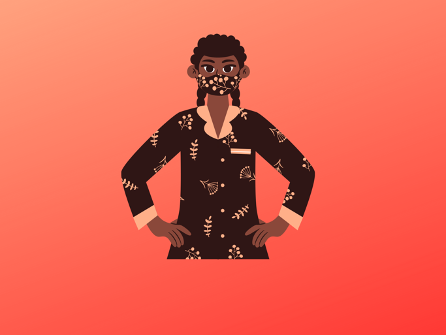
Healthy communities look out for one another.
We know that there is lots of information on safety precautions and best practices when it comes to social distancing and preventing the community spread of COVID-19. Wearing a non-medical mask, washing your hands, and practicing physical distancing are some of the ways that we can take care of our communities.
Wearing a non-medical face mask is recommended by the Government of Canada and Canadian health officials to avoid spreading droplets between individuals. Below you’ll find some information on how to choose a protective mask, put on and take off your mask, and keep it clean!
The information below is taken directly from the Government of Canada and the Centre for Disease Control.
Choosing a non-medical cloth face mask
As many options for cloth masks become available, it is important to choose one that is designed according to official guidelines.
Non -medical face masks and coverings should:
- fit comfortably and snugly against the face;
- have ear loops or ties that secure the mask in place;
- be made with at least 2 layers of a tightly woven fabric such as cotton or linen;
- allow the individual to breathe without difficulty;
- be able to be washed and machine dried without damage or change to shape
- be changed as soon as they become damp or dirty
- be large enough to completely cover your nose and mouth without gaping
Non-medical masks or face coverings should not:
- be shared with others;
- impair your vision or interfere with tasks;
- be used by children under the age of 2;
- be made of plastic or other non-breathable materials;
- be secured with tape or other inappropriate and loosely adhesive materials
- be made exclusively of materials that easily fall apart, such as tissues
- be placed on anyone unable to remove them without assistance or anyone who has trouble breathing
References:
- https://www.cdc.gov/coronavirus/2019-ncov/prevent-getting-sick/diy-cloth-face-coverings.html
- https://www.canada.ca/en/public-health/services/diseases/2019-novel-coronavirus-infection/prevention-risks/about-non-medical-masks-face-coverings.html
The following information on putting on, taking off and cleaning your non-medical mask is provided by the Government of Canada. See their page here for more details.
How to put on a non-medical mask or face covering
- Ensure the face covering is clean and dry.
- Wash your hands with warm water and soap for at least 20 seconds before touching the mask.
- If none is available, use hand sanitizer with a minimum 60% alcohol base.
- Ensure your hair is away from your face.
- Place the face covering over your nose and mouth and secure to your head or ears with its ties or elastics.
- Adjust if needed to ensure nose and mouth are fully covered.
- The mask should fit snugly to the cheeks and there should not be any gaps.
- Repeat Step 2.
While wearing a non-medical mask or face covering, it is important to avoid touching your face. If you do touch your mask or face, you should immediately wash your hands with warm water and soap for at least 20 seconds. You can also use hand sanitizer with a minimum 60% alcohol base.
How to remove a non-medical mask or face covering
- Wash your hands with warm water and soap for at least 20 seconds.
- If none is available, use hand sanitizer with a minimum 60% alcohol base.
- Remove the face covering by un-tying it or removing the loops from your ears.
- Avoid touching the front of the mask when removing it.
- It can be placed in a plastic bag temporarily if you are not at home.
- Make sure you close or zip seal the bag while storing it.
- After removing the face covering, repeat Step 1.
Cleaning and disposing of non-medical masks and face coverings
If you plan to reuse the mask, wash it before wearing it again. Change your cloth mask as soon as it gets damp or soiled by:
- putting it directly into the washing machine
- washing it with other items using a hot cycle, and then dry thoroughly
Non-medical masks that cannot be washed should be discarded and replaced as soon as they get damp, soiled or crumpled. After use:
- dispose of masks properly in a lined garbage bin
- do not leave discarded masks in shopping carts or on the ground
Reference:
.
